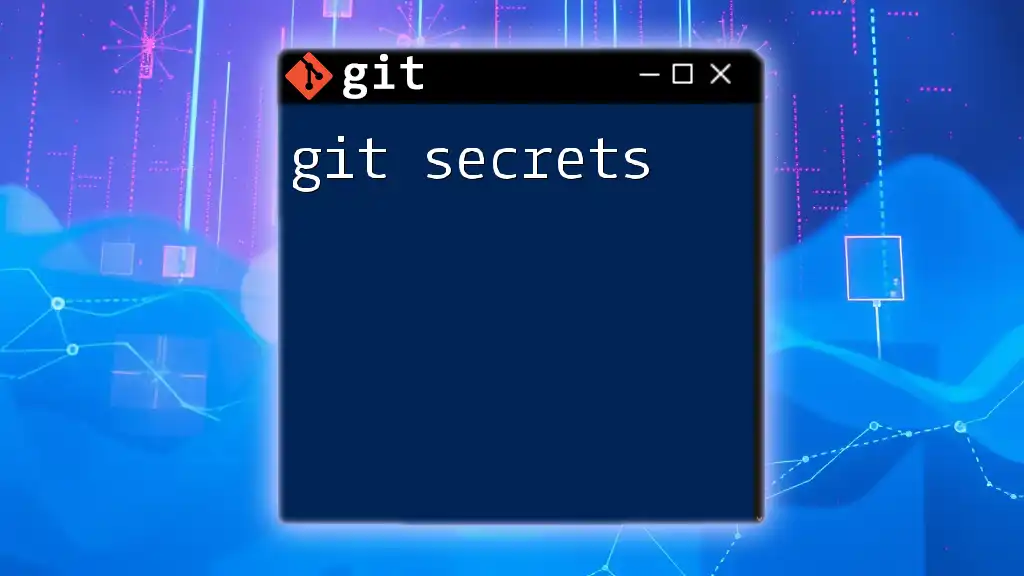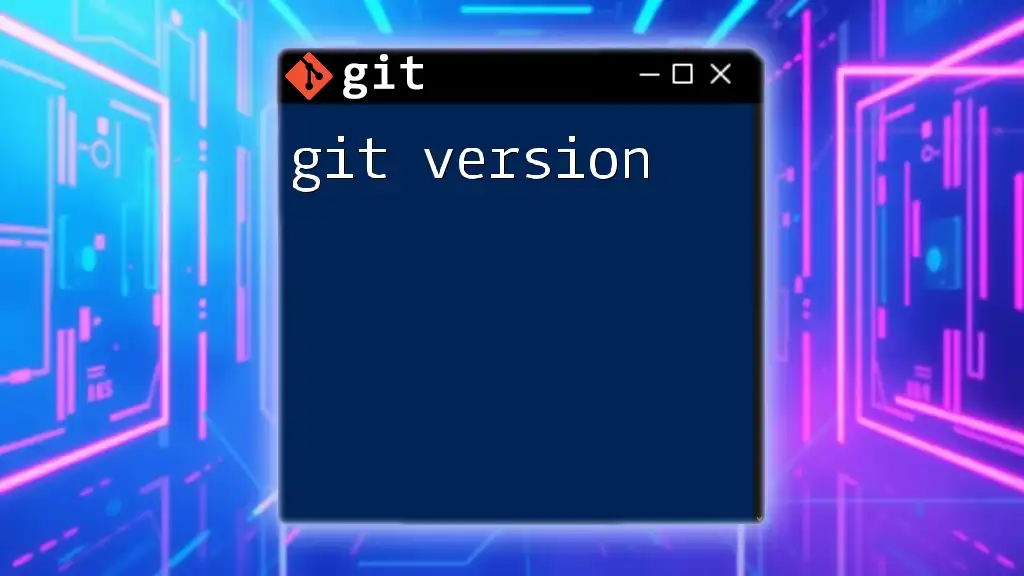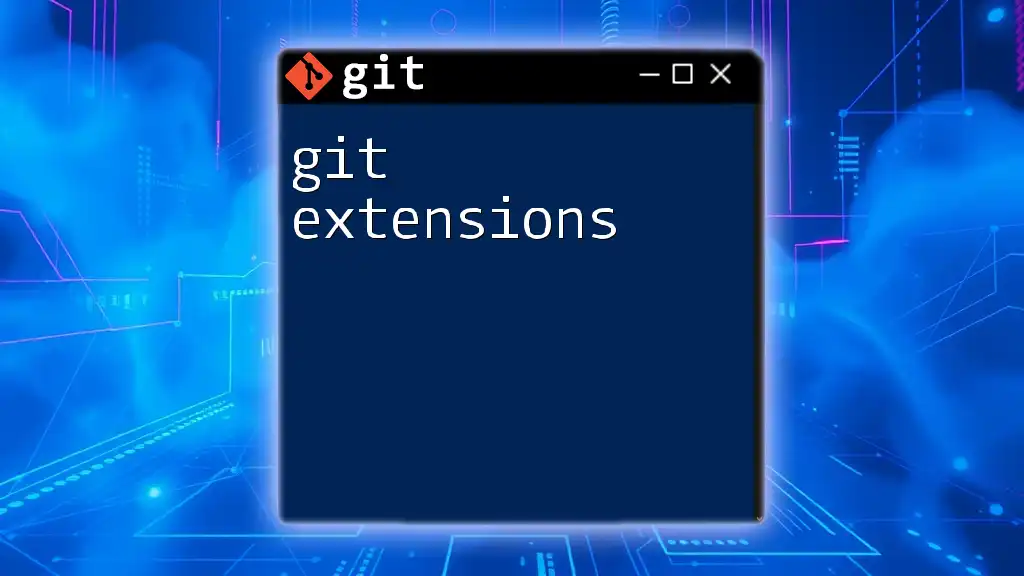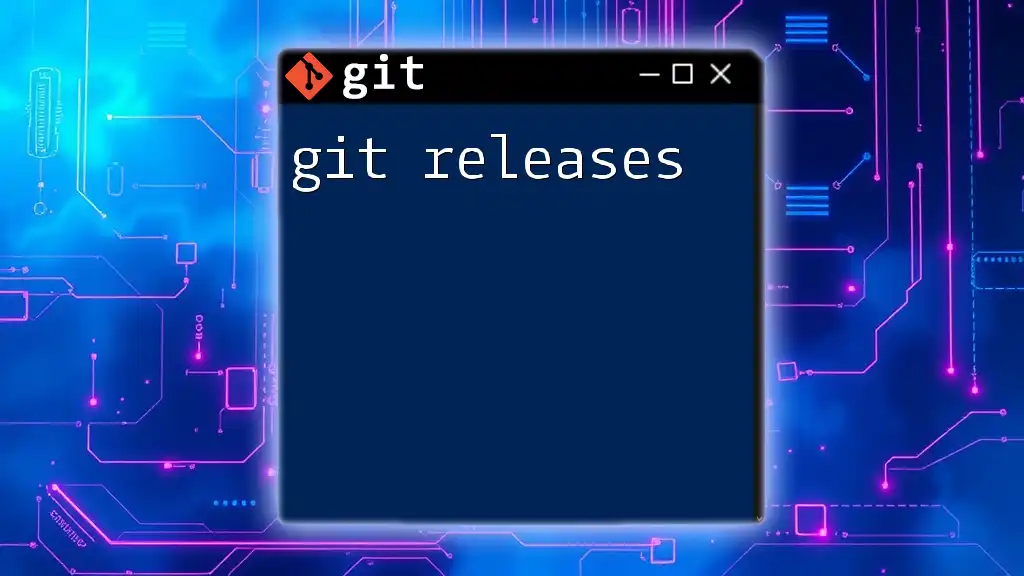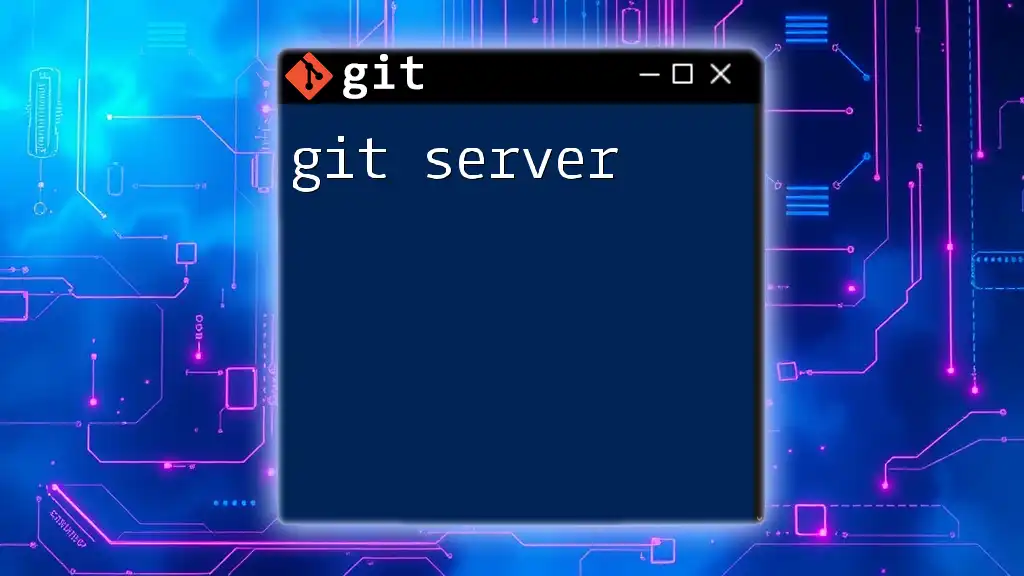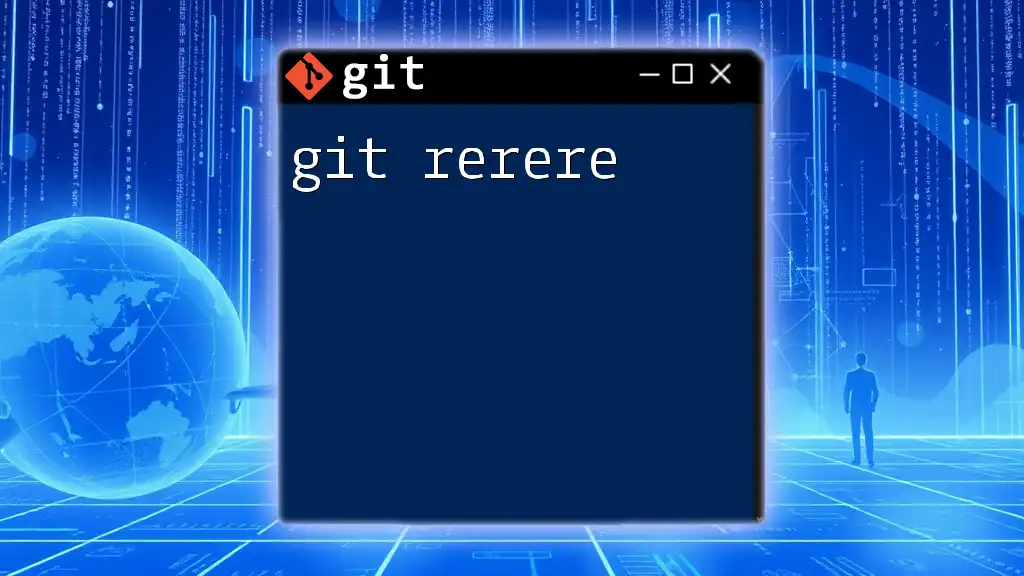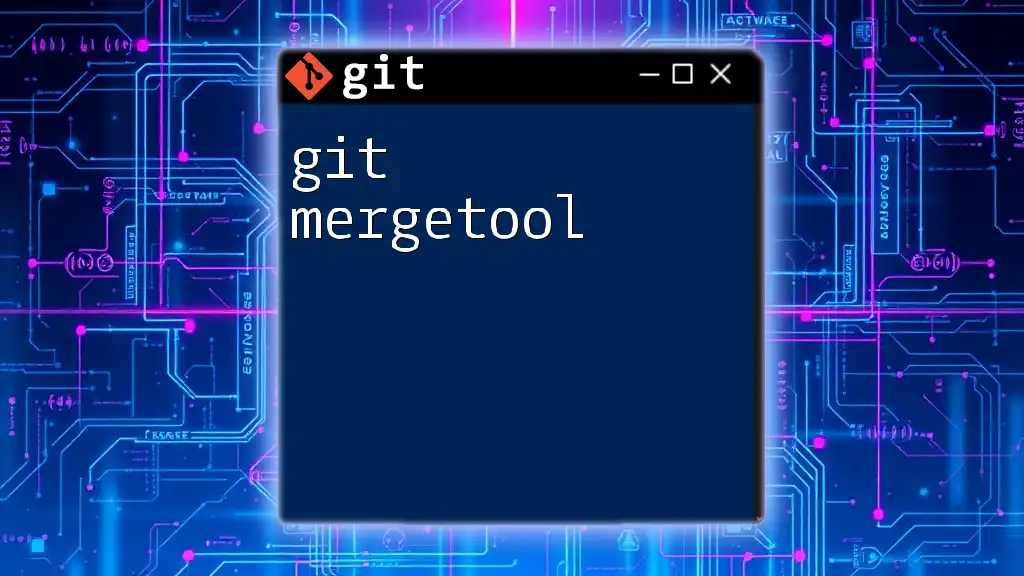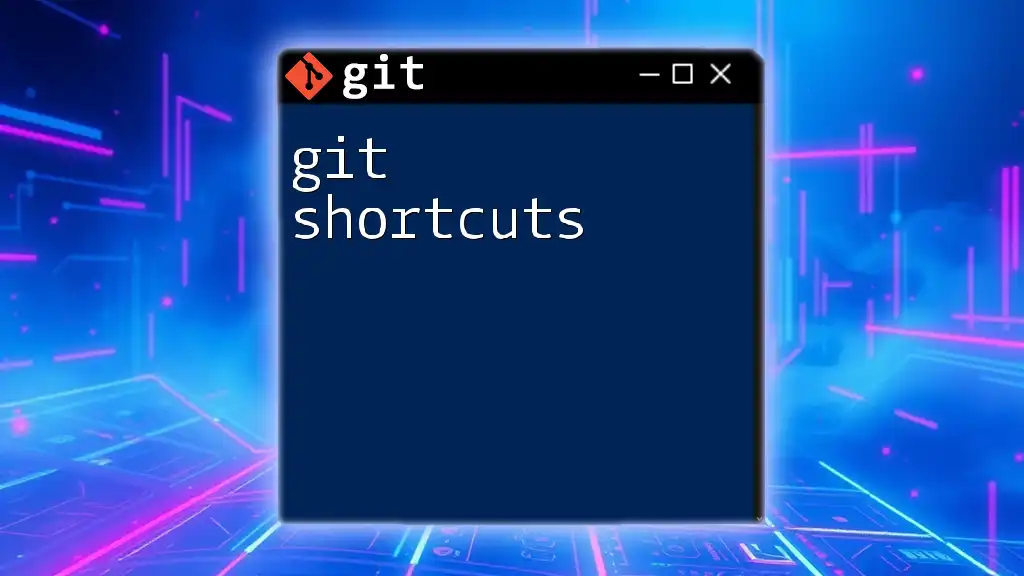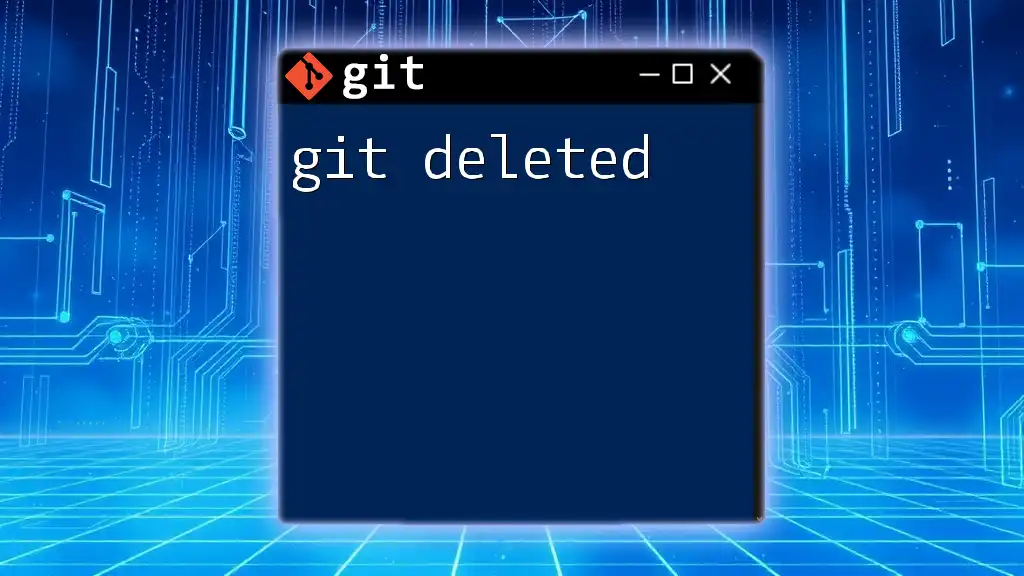"Git secrets" refers to the practice of preventing sensitive information, like passwords and API keys, from being committed to a Git repository, thus enhancing security and protecting confidential data.
Here's a code snippet demonstrating how to set up Git secrets using a pre-commit hook:
git secrets --install
git secrets --register-aws
Understanding Git Basics
What is Git?
Git is a distributed version control system designed to handle everything from small to very large projects with speed and efficiency. It allows multiple developers to work on the same project simultaneously without interfering with each other's work. Git is fundamentally a tool used to track changes in the source code during software development.
The Importance of Git in Development
Utilizing Git offers several benefits:
- Collaboration: Teams can work on the same codebase without conflicts, significantly improving the development workflow.
- History tracking: Git maintains a detailed history of all changes, allowing developers to revert to previous states seamlessly.
- Branching: Developers can create branches for features, fixes, or experiments independently, minimizing the impact on the main working state of the project.
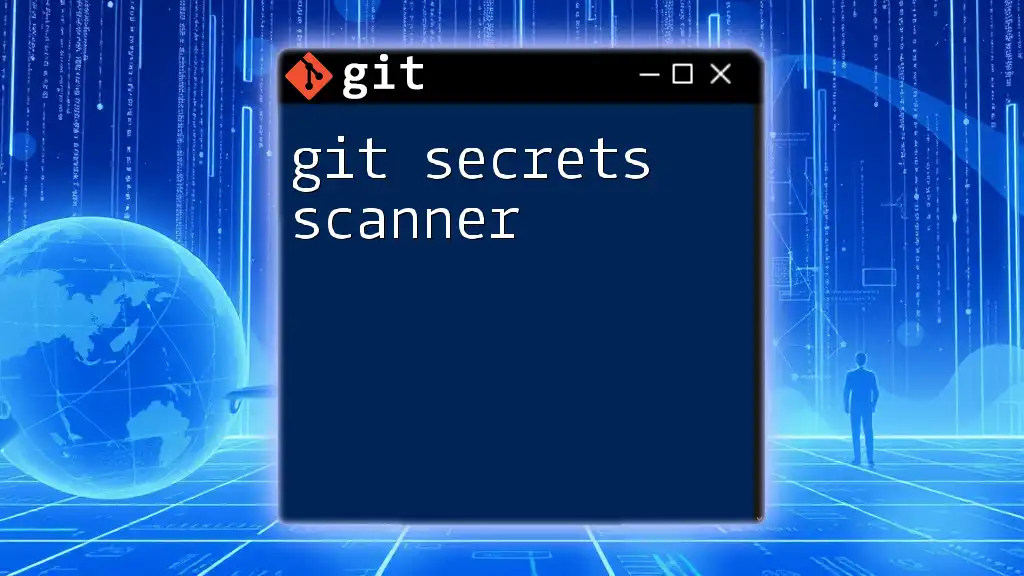
Hidden Gems in Git Commands
Git Aliases: Personalizing Your Workflow
Git aliases allow you to create shortcuts for your most-used commands, effectively personalizing your workflow. By simplifying repetitive tasks, aliases can significantly speed up your daily tasks.
What are Git aliases?
Aliases are shorthand commands that you can define in your Git configuration, enabling you to type less and do more.
Creating Git aliases
You can easily create an alias by using the following command:
git config --global alias.co checkout
git config --global alias.br branch
Example usage of aliases
Instead of typing `git checkout branch-name`, you can simply type `git co branch-name`, making your workflow more efficient and reducing the chance of typos.
Interactive Rebase: Squashing Commits
Interactive rebase is a powerful feature for cleaning up commit history. It allows you to edit, reorder, and squash commits together, resulting in a more coherent project history.
What is Interactive Rebase?
Interactive rebase lets you choose how to handle several commits, enabling you to combine them for a cleaner commit history.
How to use Interactive Rebase
Invoke an interactive rebase for the last three commits by running:
git rebase -i HEAD~3
Squashing commits step-by-step
After running the above command, you'll see a list of the last three commits. You can change `pick` to `squash` (or the shorthand `s`) for any commits you want to combine. For instance, if you want to merge the last two commits, you would mark the second commit as `squash`. This results in a single commit that summarizes the changes, providing clarity to your project's history.
Cherry-Picking: Selecting Specific Commits
Cherry-picking is the process of taking a commit from one branch and applying it to another. This is particularly useful for applying hotfixes or features without merging entire branches.
Understanding Cherry-Picking
By cherry-picking, you can selectively incorporate changes without merging the entire branch, giving you more control over your codebase.
How to cherry-pick a commit
You can cherry-pick a specific commit by using its hash:
git cherry-pick <commit-hash>
Example: Cherry-picking in action
Suppose you have a commit in the `feature` branch that solves a critical issue. You can cherry-pick this commit into the `main` branch without needing to merge all the changes from the `feature` branch.
Stashing Changes: Saving Work-in-Progress
Stashing provides a way to temporarily save changes that you aren't ready to commit yet. This is incredibly useful when you find yourself needing to switch branches or work on a different task.
What is Git Stashing?
Git stash allows you to put away uncommitted changes and return to a clean working directory later.
Stashing your changes
To stash your current changes, simply run:
git stash
You can later retrieve those changes using:
git stash apply
Example: Managing multiple tasks
Let’s say you’re troubleshooting a bug on `main` but need to address a pull request from `develop`. You can stash your changes on `main`, switch to `develop`, handle the pull request, and later return to your original task without losing any progress.
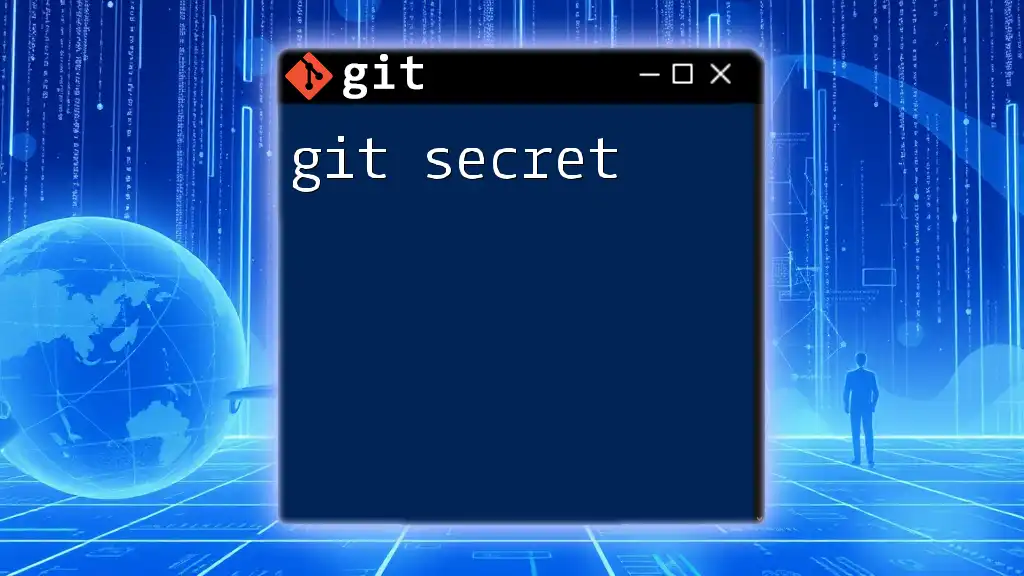
Advanced Commands and Techniques
Using `git log` Effectively
The `git log` command is vital for understanding your project's history, but many users only scratch the surface of its potential.
Understanding the Git Log
`git log` displays the commit history for the current branch, detailing when and what changes were made.
Customizing git log output
You can customize the output to make it clearer and more informative:
git log --oneline --graph --decorate
This command provides a simplified, visual representation of the commit history, making it easier to see how branches diverge and converge.
Example: Visualizing commit history
When using the previous command, you achieve a compact overview that represents both commit messages and the structure of your commits, highlighting their relationships visually.
Rebasing vs. Merging: When to Use Each
Understanding the differences between rebasing and merging is crucial for maintaining clean project histories.
Defining Rebasing and Merging
- Rebase: Takes the changes from one branch and re-applies them on top of another branch, creating a cleaner linear history.
- Merge: Combines two branches by creating a new commit that ties together the histories of both branches.
Pros and Cons of Rebasing
- Pros: Produces a clearer, linear project history.
- Cons: Can rewrite commit history, which may lead to confusion if done incorrectly on shared branches.
Pros and Cons of Merging
- Pros: Maintains the original context of all commits.
- Cons: Results in a less clean history with potential merge commits cluttering the log.
Comparison example of a real-world use case
If you're working on a feature but realize that another developer has introduced breaking changes, choosing to rebase against `main` rather than merging can help simplify your own commits and keep the project history clean.
The Power of `git grep`
The `git grep` command allows you to perform fast and efficient searches through your repository’s codebase.
What is Git Grep?
`git grep` is a command that searches through the tracked files in your Git repository, helping you locate specific pieces of code quickly.
Using Git Grep to find code snippets
You can search for a function by running:
git grep 'functionName'
This command will return every file that contains the specified function, which significantly aids in debugging and understanding legacy code.
Example: Spotting issues or changes
Utilize `git grep` when you want to locate all implementations of a function or variable across the entire project, enabling you to efficiently address any inconsistencies or refactorings needed.
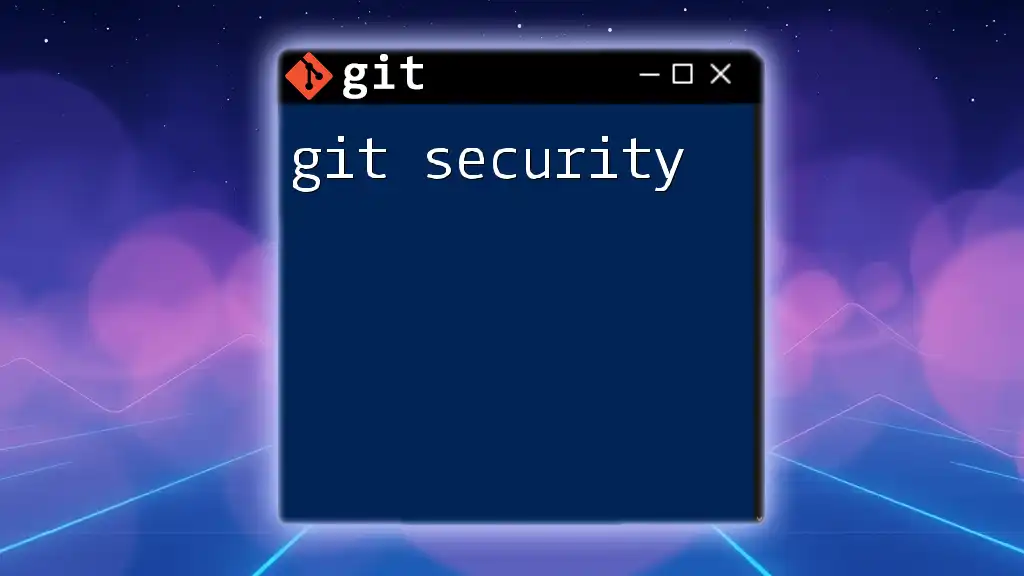
Practical Tips and Best Practices
Keeping Your Repository Clean
Maintaining a clean commit history is essential for collaboration and long-term project success. Frequent merging, particularly with poorly structured commits, can lead to confusion.
Importance of clean commit history
A clean history benefits everyone involved in a project. It allows newer team members to quickly understand the evolution of the codebase and eases the debugging process.
Tips for writing meaningful commit messages
Commits should have messages that are clear and descriptive. One effective format is using a short summary of what the commit does, followed by a more detailed explanation if necessary.
Collaborating Effectively with Branches
Utilizing branching strategies is key to organizing your work effectively in Git.
Branching Strategies
Adopting a branching strategy — like Git Flow — can streamline collaboration. Each feature, bugfix, or experiment can have its own branch, allowing you to work in isolation and maintain a stable main branch.
Regularly Updating Your Knowledge
The world of Git is constantly evolving, with new features and best practices emerging regularly. Staying updated will help you maximize Git’s potential.
Keeping up with Git updates
Engaging with the community by reading documentation, subscribing to blogs, or joining forums can keep you informed of the latest changes in Git.
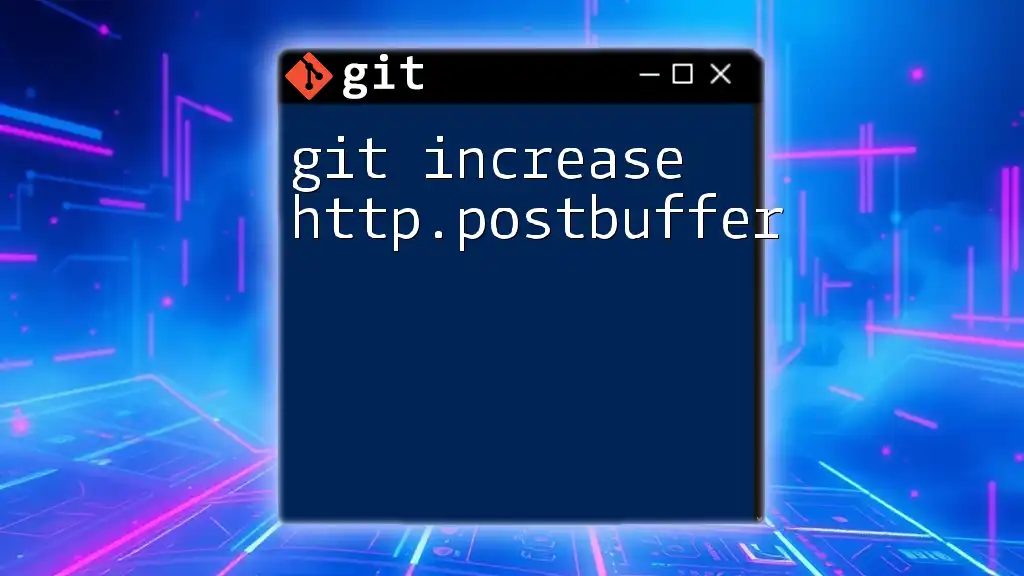
Conclusion
In this guide, we've uncovered essential git secrets that can dramatically improve your workflow and project management. From leveraging aliases and interactive rebase to effectively using commands like `git log` and `git grep`, these tools empower developers to manage and utilize their code more efficiently.
To further enhance your Git skills, continue exploring and practicing these commands. The more familiar you become with Git's features, the more productive and effective you will be in your development endeavors.
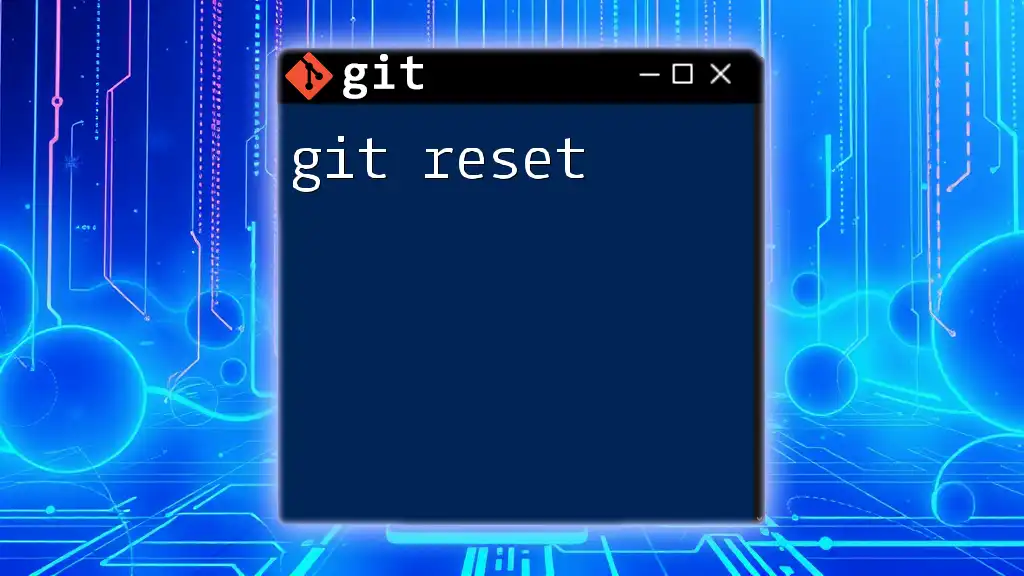
Call to Action
Subscribe for More Tips
Stay informed and ahead of the curve by signing up for our newsletters and updates, where we share additional insights and tips on Git and version control.
Join the Community
Engage with other developers in forums or on our social media channels to share knowledge, seek advice, and continue growing your skills in using Git efficiently.

